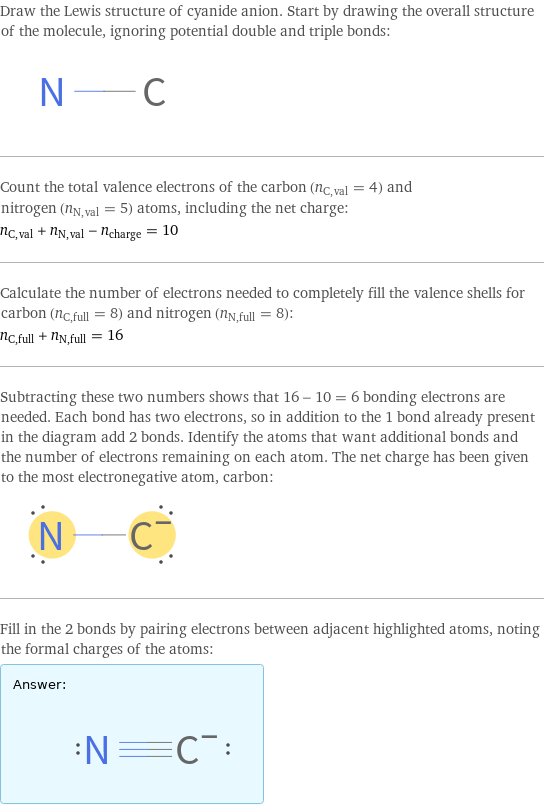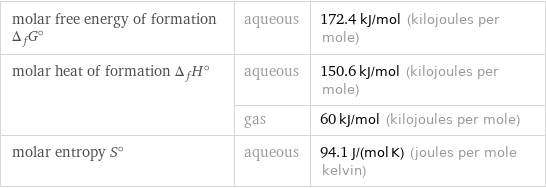Input interpretation

cyanide anion
Lewis structure

Draw the Lewis structure of cyanide anion. Start by drawing the overall structure of the molecule, ignoring potential double and triple bonds: Count the total valence electrons of the carbon (n_C, val = 4) and nitrogen (n_N, val = 5) atoms, including the net charge: n_C, val + n_N, val - n_charge = 10 Calculate the number of electrons needed to completely fill the valence shells for carbon (n_C, full = 8) and nitrogen (n_N, full = 8): n_C, full + n_N, full = 16 Subtracting these two numbers shows that 16 - 10 = 6 bonding electrons are needed. Each bond has two electrons, so in addition to the 1 bond already present in the diagram add 2 bonds. Identify the atoms that want additional bonds and the number of electrons remaining on each atom. The net charge has been given to the most electronegative atom, carbon: Fill in the 2 bonds by pairing electrons between adjacent highlighted atoms, noting the formal charges of the atoms: Answer: | |
General properties

formula | (CN)^- net ionic charge | -1 alternate names | cyanide | cyanide(1-) | nitrile anion
Ionic radius

thermochemical radius | 191 pm
Units

Other properties

ion class | anions | polyatomic ions common sources of ion | zinc cyanide (2 eq) | tetraethylammonium cyanide (1 eq) | tetrabutylammonium cyanide (1 eq) | sodium dicyanoaurate (2 eq) | sodium cyanide (1 eq) | silver cyanide (1 eq) | potassium tetracyanoplatinate(II) (4 eq) | potassium tetracyanonickelate(II) (4 eq) | potassium hexacyanoplatinate(IV) (6 eq)
Thermodynamic properties

molar free energy of formation Δ_fG° | aqueous | 172.4 kJ/mol (kilojoules per mole) molar heat of formation Δ_fH° | aqueous | 150.6 kJ/mol (kilojoules per mole) | gas | 60 kJ/mol (kilojoules per mole) molar entropy S° | aqueous | 94.1 J/(mol K) (joules per mole kelvin)